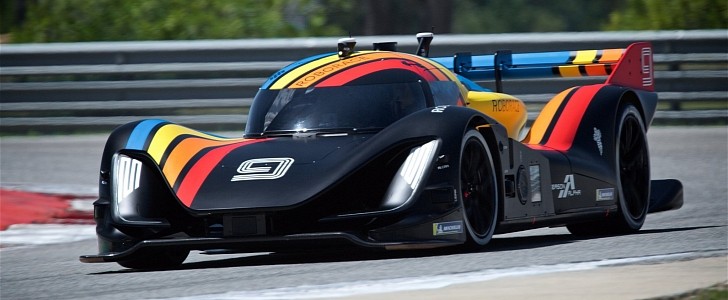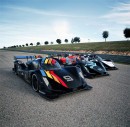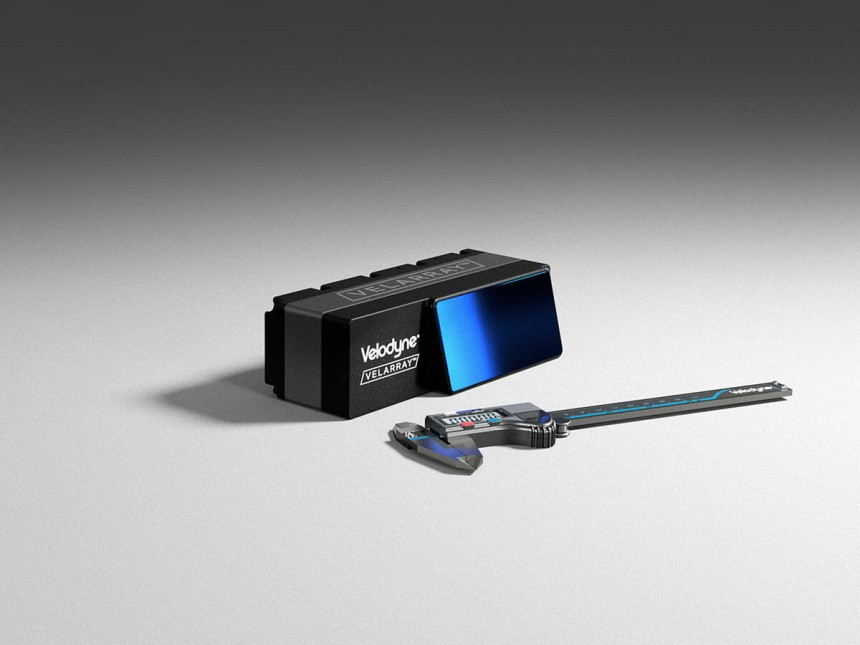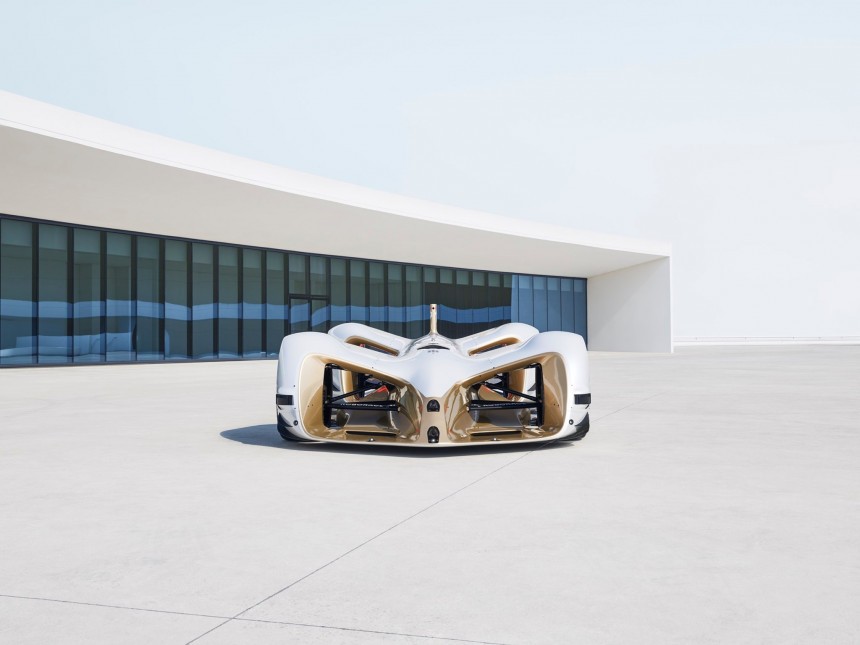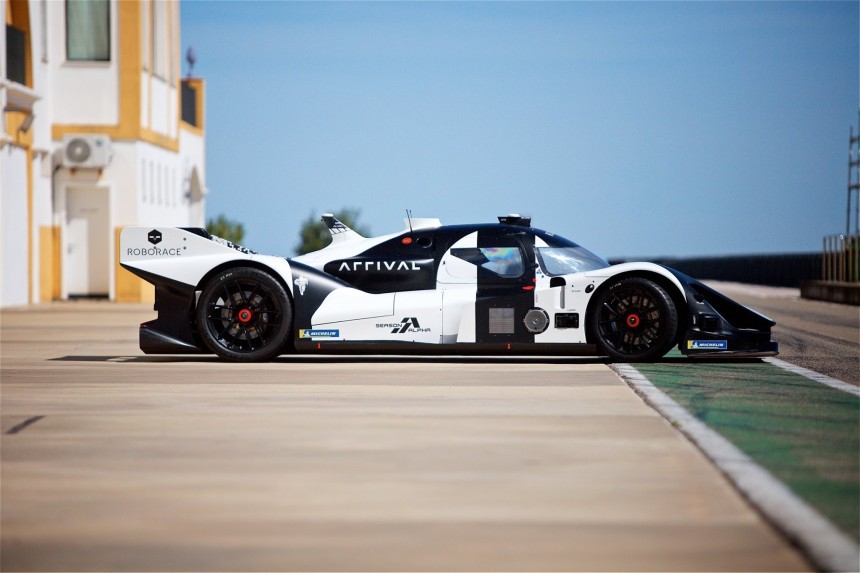Folks, the autonomous future we've been talking about for the past few years is here. One place you can see autonomous vehicles in action is Roborace. But it takes a whole lot to help a vehicle maneuver safely through a track at high speeds.
With that in mind, what's the primary system that autonomous vehicles rely on? Light Detection and Ranging, or LiDAR for short. It's this system alone that countless companies are working on to become the next to get their hands on some contracts and cash.
One team that has shaken hands with Roborace is Velodyne Lidar. If you've never heard of Velodyne Lidar, it's because they like to play the game very underground. This company initially started back in 1984 when David Hall founded Velodyne Acoustics, a company specializing in subwoofer design. However, in 2004, this crew showed the world their LiDAR-designing expertise by entering the DARPA Grand Challenge.
One year later, this crew's real-time 3D LiDAR system would forever pave the way for autonomous vehicles. From Google to Ford and Caterpillar and even Mercedes-Benz, Velodyne is that crew that's helping your autonomous vehicle take flight.
This brings us to another partner that has shaken hands with this crew, Roborace. As you may know, Roborace is a racing league with the primary purpose of running autonomous vehicles. However, there's more to it than just watching cars race around a track on their own.
Because Roborace vehicles are tuned to perform under stressful conditions, this presents designers and manufacturers of diverse autonomous systems with the perfect playground to optimize and develop current and future systems.
Why? Well, think about it. If you're a manufacturer of LiDAR systems, and the product you build can function at speeds and conditions rarely met in day-to-day driving, then you know it's going to do just fine the moment you transfer that tech into a less-soliciting setting. With Velodyne as part of the Roborace setting, it should help project this team's products to a level where few other companies will compete; that seems to be the plan anyway.
The system that Velodyne is currently furnishing Roborace with is Velarray H800. This solid-state LiDAR sensor released in late 2020 offers long-range perception (perfect for Roborace) coupled with countless Advanced Driver Assistance Systems (ADAS). These features are necessary in keeping multi-million-dollar vehicles in working order.
To get an idea of what "solid-state" means when we're talking about LiDAR, you have to understand that traditional LiDAR projects pulses of light to identify objects. Solid-state is different than traditional LiDAR in that there's a continuous laser beam being projected out of the system, much like a projector with a constant stream of images. And yes, the entire time you're driving. This means your car won't miss a thing, ever.
Speaking of never missing a beat, H800 is designed to work in settings deemed problematic for previous systems. The solid-state function offers peripheral detection, near-field, overhead objects, and even handles sloping corners as though you were driving yourself.
Best of all, H800 is a pretty tiny system when you have it in your hands. after all, the images in the gallery show a pen just so you can see how small this system is. H800 will be used in Season One Championship series cars, currently, DevBot 2.0.
Why does size matter? Well, imagine having to power this machine. The larger it is, the more energy it'll usually require to operate. Then there's the aspect of integration. The smaller a LiDAR system may be, the easier it is to adapt to an array of vehicles. Did I mention that these puppies have been projected to sell for around 500 USD (440 EUR at current exchange rates) a piece? Talk about accessible tech.
As for the entertainment aspect of Roborace, I recommend checking out one of the races to see what they're all about. Even a metaverse has been created where NFTs also take part in the action.
Together, these two teams are working hard to create a future where your vehicle can achieve full autonomy, or level 5. If these collaborations keep happening, technology will only progress faster and faster as it sees real-life testing and applications.
One team that has shaken hands with Roborace is Velodyne Lidar. If you've never heard of Velodyne Lidar, it's because they like to play the game very underground. This company initially started back in 1984 when David Hall founded Velodyne Acoustics, a company specializing in subwoofer design. However, in 2004, this crew showed the world their LiDAR-designing expertise by entering the DARPA Grand Challenge.
One year later, this crew's real-time 3D LiDAR system would forever pave the way for autonomous vehicles. From Google to Ford and Caterpillar and even Mercedes-Benz, Velodyne is that crew that's helping your autonomous vehicle take flight.
Because Roborace vehicles are tuned to perform under stressful conditions, this presents designers and manufacturers of diverse autonomous systems with the perfect playground to optimize and develop current and future systems.
Why? Well, think about it. If you're a manufacturer of LiDAR systems, and the product you build can function at speeds and conditions rarely met in day-to-day driving, then you know it's going to do just fine the moment you transfer that tech into a less-soliciting setting. With Velodyne as part of the Roborace setting, it should help project this team's products to a level where few other companies will compete; that seems to be the plan anyway.
The system that Velodyne is currently furnishing Roborace with is Velarray H800. This solid-state LiDAR sensor released in late 2020 offers long-range perception (perfect for Roborace) coupled with countless Advanced Driver Assistance Systems (ADAS). These features are necessary in keeping multi-million-dollar vehicles in working order.
Speaking of never missing a beat, H800 is designed to work in settings deemed problematic for previous systems. The solid-state function offers peripheral detection, near-field, overhead objects, and even handles sloping corners as though you were driving yourself.
Best of all, H800 is a pretty tiny system when you have it in your hands. after all, the images in the gallery show a pen just so you can see how small this system is. H800 will be used in Season One Championship series cars, currently, DevBot 2.0.
As for the entertainment aspect of Roborace, I recommend checking out one of the races to see what they're all about. Even a metaverse has been created where NFTs also take part in the action.
Together, these two teams are working hard to create a future where your vehicle can achieve full autonomy, or level 5. If these collaborations keep happening, technology will only progress faster and faster as it sees real-life testing and applications.
